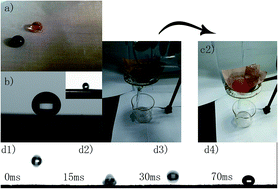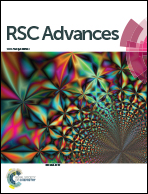Polyvinylidene fluoride (PVDF)/hydrophobic nano-silica (H-SiO2) coated superhydrophobic porous materials for water/oil separation†
Abstract
The separation of water and oil is a promising work due to the increasing worldwide oil pollution and leakage of chemical solvents. Superhydrophobic porous materials were prepared for their separation. In this work, various porous substrates of copper meshes, filter papers and polyurethane (PU) sponges were chosen to obtain superhydrophobic surfaces. Superhydrophobic surfaces were fabricated by polyvinylidene fluoride (PVDF) and hydrophobic nano-silica particle coatings through a spraying approach. The superhydrophobicity, stability of coatings and oil/water separation effect of these as-coated materials were studied. The results demonstrated that all the surfaces showed high water contact angles (>150°), good reusability and excellent oil selectively. Moreover, the coated filter paper was scaled up for practical use of removing trace water from mineral insulating oil in our group. It is promising that this superhydrophobic coating could be used in more applications.


 Please wait while we load your content...
Please wait while we load your content...